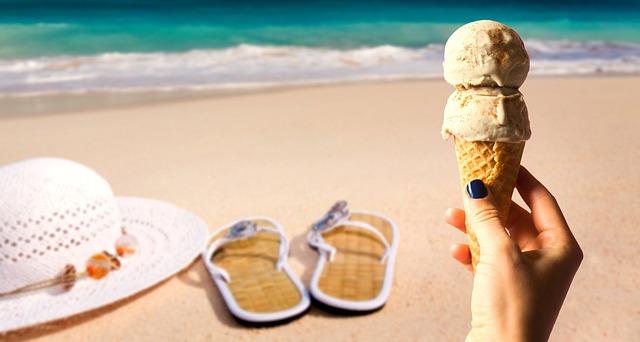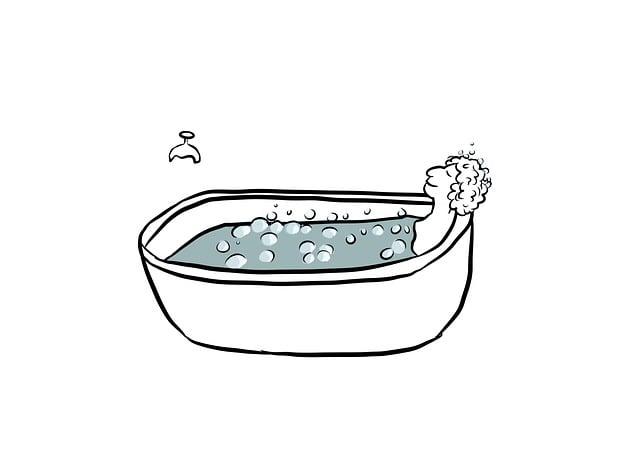Optimal Ice Bath Temp: Discovering the Perfect Chill Temperature

Are you an athlete looking to enhance your recovery routine? Look no further! In this article, we dive deep into the fascinating world of ice baths and uncover the secrets behind finding the optimal chill temperature. Whether you’re a seasoned pro or just starting your fitness journey, prepare to be amazed as we unravel the science and provide you with a clear understanding of how to achieve the perfect chill. So grab a towel and get ready to take the plunge into the icy depths of this informative guide.
Contents
- – Understanding the Science behind Ice Baths: The Key Factors Influencing Recovery
- – Finding the Sweet Spot: Exploring the Ideal Temperature Range for Maximum Benefits
- – Benefits Beyond the Chill: Unveiling the Power of Cold Therapy
- – Achieving the Goldilocks Effect: Striking the Perfect Balance in Ice Bath Temperatures
- – The Role of Individual Preferences: How to Personalize Your Ice Bath Experience
- – Pushing the Limits: Exploring Lower Temperatures for Enhanced Recovery
- – Raising the Bar: Can Higher Ice Bath Temperatures Offer Additional Benefits?
- – Experimentation and Fine-Tuning: Discovering Your Optimal Ice Bath Temperature
- Start with a Baseline
- Experiment with Different Temperatures
- Fine-Tune for Optimal Results
- Conclusion
- – The Importance of Gradual Adaptation: Successfully Navigating Different Ice Bath Temperatures
– Understanding the Science behind Ice Baths: The Key Factors Influencing Recovery
Ice baths are widely used in the sports and fitness world for their potential to enhance recovery after intense physical activity. But what is the optimal temperature for an ice bath? The answer lies in understanding the science behind it and the key factors that influence recovery.
Temperature plays a crucial role in the effectiveness of ice baths. While there is no one-size-fits-all answer, research suggests that the optimal temperature for an ice bath falls between 10 to 15 degrees Celsius (50 to 59 degrees Fahrenheit). This temperature range provides a balance between the desired physiological responses of reducing inflammation and promoting muscle repair without causing undue stress or discomfort.
But why does the temperature matter? When exposed to cold temperatures, blood vessels constrict, reducing blood flow to the muscles. This decrease in blood flow helps to minimize inflammation and muscle damage. Additionally, the cold temperature can help numb pain receptors, providing relief from any soreness or discomfort. However, immersing oneself in water that is too cold can be counterproductive and may lead to prolonged recovery time or even injury.
To ensure an optimal ice bath experience, consider the following factors:
-
Gradual Cooling: Ease into the cold water instead of jumping straight into an ultra-cold bath. This allows your body to adjust to the temperature and reduces the shock to your system.
-
Duration: Aim for a duration of 10 to 20 minutes in the ice bath. This timeframe is generally sufficient to reap the benefits without risking harmful side effects.
- Contrast Therapy: Alternating between cold and hot water can enhance the recovery process. This method, known as contrast therapy, promotes vasodilation and increased blood flow, aiding in flushing out metabolic waste and delivering essential nutrients to the muscles.
In conclusion, understanding the science behind ice baths and the key factors influencing recovery can help you discover the perfect chill temperature for your ice bathing routine. By striking the right balance and taking into account individual preferences and guidelines, you can harness the potential benefits of cold immersion therapy to optimize your recovery after intense physical activity.
– Finding the Sweet Spot: Exploring the Ideal Temperature Range for Maximum Benefits
When it comes to taking ice baths, finding the optimal temperature range for maximum benefits is crucial. The perfect chill temperature that strikes the right balance between effectiveness and comfort can vary from person to person. However, extensive research and practical experience have provided valuable insights into the ideal range that can offer the maximum benefits.
For most individuals, the sweet spot lies between 10°C (50°F) and 15°C (59°F). These temperatures are considered effective in triggering the desired physiological responses without causing excessive discomfort. The benefits of immersing your body in ice baths within this temperature range are numerous:
- Improved muscle recovery: The cold temperature helps reduce inflammation, muscle soreness, and aids in the repair of micro-tears in muscle fibers.
- Enhanced performance: Regular ice baths within the optimal temperature range can lead to improved circulation, increased oxygen flow, and better removal of metabolic waste products, ultimately enhancing athletic performance.
- Decreased fatigue: The cold temperature stimulates the release of endorphins, reducing fatigue and promoting a sense of relaxation and well-being.
- Strengthened immune system: Cold exposure has been shown to activate the body’s natural defense mechanisms, strengthening the immune system and promoting overall health.
It’s important to listen to your body and adjust the temperature accordingly. Some individuals may prefer slightly colder or warmer temperatures within a reasonable range. Experimentation and personal preference can play a role in finding your own perfect chill temperature for ice baths. Remember, always consult with a healthcare professional before starting any new health regimen.
– Benefits Beyond the Chill: Unveiling the Power of Cold Therapy
Cold therapy, specifically ice baths, has gained popularity among athletes and fitness enthusiasts for its numerous benefits. While the initial reason for taking an ice bath may be to reduce muscle soreness and inflammation, the benefits extend far beyond just the immediate relief. By discovering the optimal ice bath temperature, you can unlock the true power of cold therapy and maximize its effects.
Finding the perfect chill temperature for your ice bath is essential to reap the full range of benefits. The ideal temperature generally ranges between 50 to 59 degrees Fahrenheit (10 to 15 degrees Celsius). This range allows for effective cold therapy without placing excessive stress on the body. However, it’s important to note that individual preferences may vary, and some individuals may find colder temperatures more suitable.
One of the main benefits of cold therapy is reducing muscle soreness and inflammation. When immersed in cold water, blood vessels constrict, which helps to minimize the inflammation response in the muscles. Additionally, cold therapy can also enhance recovery by reducing muscle fatigue and accelerating the removal of metabolic waste products. It’s a natural and effective way to speed up the recovery process after intense workouts or sports events.
In conclusion, the optimal ice bath temperature plays a crucial role in unveiling the power of cold therapy. By choosing a temperature between 50 to 59 degrees Fahrenheit, you can experience the benefits of reduced muscle soreness, inflammation, and improved recovery. Incorporating cold therapy into your fitness routine may just be the missing piece to elevate your performance and overall well-being. So, take the plunge and discover the transformative effects of cold therapy today!
– Achieving the Goldilocks Effect: Striking the Perfect Balance in Ice Bath Temperatures
Ice baths have long been a popular method for athletes to recover and reduce muscle inflammation after intense workouts. However, finding the perfect balance in ice bath temperatures can be a challenge. Too cold, and you risk hypothermia; too warm, and you won’t reap the full benefits. Achieving the Goldilocks Effect, that perfect chill temperature, is essential for maximizing the effects of an ice bath.
So, what is the optimal ice bath temperature? While individual preferences may vary, a general guideline is to aim for a range between 50 to 59 degrees Fahrenheit (10 to 15 degrees Celsius). This temperature range strikes the right balance between providing therapeutic benefits and minimizing potential risks.
When the body is submerged in water of this temperature, it triggers a process called vasoconstriction, where blood vessels constrict and reduce blood flow to the muscles. This helps alleviate inflammation and prevents further damage to the muscles. Additionally, the cool water numbs nerve endings, providing pain relief and reducing swelling.
Remember, it’s crucial to monitor the temperature of the water accurately to ensure its safety and effectiveness. Digital thermometers are highly recommended for this purpose. Consider using a waterproof thermometer with a long probe to reach the middle of the water, where it’s most accurate. Maintaining the temperature within the recommended range will help you achieve the Goldilocks Effect and optimize your ice bath experience.
So, the next time you take an ice bath, aim for that perfect chill temperature between 50 to 59 degrees Fahrenheit (10 to 15 degrees Celsius) to strike the perfect balance and reap the full benefits of this powerful recovery method.
– The Role of Individual Preferences: How to Personalize Your Ice Bath Experience
When it comes to taking an ice bath, the individual preferences of each person play a crucial role in personalizing the experience. From the water temperature to the duration of the bath, tailoring your ice bath to your specific needs can greatly enhance its benefits. One of the key factors to consider is the optimal ice bath temperature, as finding the perfect chill temperature can make all the difference.
Experimenting with different temperatures is the best way to determine what works best for you. However, there are some general guidelines to keep in mind. Most experts recommend setting the water temperature between 50°F and 60°F (10°C and 15°C) for an effective ice bath. This temperature range strikes a balance between providing sufficient cold therapy and avoiding extreme discomfort. But remember, these are just starting points, and you should adjust the temperature based on your comfort level and personal goals.
Here are some tips for discovering your perfect chill temperature:
- Start with 50°F (10°C) and gradually decrease the temperature until you find a level that challenges but doesn’t overwhelm you.
- Pay attention to your body’s response. If you begin shivering uncontrollably or feel intense discomfort, it may be a sign that the water is too cold for you.
- Consider your specific goals for the ice bath. If you’re aiming to reduce inflammation, colder temperatures may be more beneficial. If you’re focusing on muscle recovery, a slightly higher temperature might be more comfortable and conducive to relaxation.
Remember, the ice bath experience should be personalized to suit your needs and preferences. Experiment with different temperatures, listen to your body, and fine-tune your ice bath routine to maximize its benefits.
– Pushing the Limits: Exploring Lower Temperatures for Enhanced Recovery
Lowering temperatures for enhanced recovery has become a popular trend among athletes seeking optimal performance. Ice baths have long been a go-to method for post-workout recovery, but just how low should the temperature go to maximize its benefits? Recent studies have delved into this question, exploring the effects of different chill temperatures on the body’s recovery process.
One key finding is that pushing the limits and exploring lower temperatures can yield significant benefits. While traditional ice baths typically range from 10 to 15 degrees Celsius, research suggests that lowering the temperature to around 5 degrees Celsius can enhance the recovery process even further. This colder temperature helps to constrict blood vessels and reduce inflammation, facilitating faster muscle repair and reducing post-exercise soreness.
To better understand the impact of lower temperatures, researchers have conducted experiments comparing different chill temperatures. For instance, a study compared the effects of a 5 degrees Celsius ice bath with a 10 degrees Celsius one. The results showed that the lower temperature group experienced a greater reduction in muscle soreness and faster recovery, indicating the benefits of exploring lower temperatures for enhanced recovery.
Incorporating lower temperatures into your post-workout routine can be a game-changer for recovery. However, it is crucial to approach it gradually and listen to your body. Starting with shorter exposure times and gradually increasing them can help your body adapt to the cold and prevent any adverse effects. So, next time you reach for an ice bath, consider pushing the limits and exploring lower temperatures for enhanced recovery, knowing that the perfect chill temperature may be colder than you think!
– Raising the Bar: Can Higher Ice Bath Temperatures Offer Additional Benefits?
Ice baths have long been hailed as a beneficial recovery method for athletes, helping to reduce muscle soreness and inflammation post-workout. But what if we told you that taking your ice bath to the next level could offer even more benefits? That’s right, raising the bar by increasing the temperature of your ice bath might just be the key to unlocking additional advantages.
When it comes to ice baths, most athletes typically stick to temperatures around 10-15 degrees Celsius. However, recent studies have suggested that bumping up the temperature to a slightly higher range, around 15-20 degrees Celsius, could potentially enhance the recovery process even further. So how exactly does raising the temperature make a difference?
One theory is that the slightly warmer water stimulates blood flow more effectively, facilitating the removal of waste products and delivering vital nutrients to the muscles. This increased circulation may result in a quicker healing process and improved overall recovery. Additionally, the higher temperature could help relax the muscles more effectively, promoting a greater release of tension and easing any post-exercise stiffness.
If you’re considering experimenting with higher ice bath temperatures, it’s important to keep in mind that individual preferences and tolerance levels may vary. It’s always best to start with a gradual increase in temperature and listen to your body’s feedback. Remember, everyone’s recovery needs are unique, so be open to adjusting the temperature based on your own comfort and desired outcomes.
Ultimately, while traditional ice baths have proven beneficial in promoting recovery, exploring the potential benefits of higher temperatures could offer exciting new possibilities for athletes. Whether you decide to stick to the classic chill or brave the realm of higher temperatures, the key is to find what works best for you and your body’s recovery journey.
– Experimentation and Fine-Tuning: Discovering Your Optimal Ice Bath Temperature
An ice bath is a popular recovery technique among athletes, helping to reduce inflammation and ease muscle soreness. However, finding the optimal ice bath temperature for your body can make a significant difference in the effectiveness of the treatment. In this post, we will explore the process of experimentation and fine-tuning to discover the perfect chill temperature for your ice bath sessions.
Start with a Baseline
Before embarking on the journey of finding your optimal ice bath temperature, it’s important to establish a baseline. Begin by setting the bathwater temperature at a moderate level, around 50°F (10°C). This temperature allows for a gradual introduction to the cold and helps your body adjust to the initial shock.
Experiment with Different Temperatures
Once you have your baseline, it’s time to experiment with different temperatures to discover what works best for you. Start by gradually decreasing the temperature by a few degrees each time. Pay close attention to your body’s response during and after the ice bath sessions. Do you feel refreshed and rejuvenated? Or do you feel excessively cold and uncomfortable?
Keep a journal to record your experiences with different temperature ranges. Note any noticeable changes in your recovery time, muscle soreness, or overall well-being. Remember, everybody is unique, so what works for others may not work for you.
Fine-Tune for Optimal Results
After several experimentation sessions, you will start to notice trends and patterns. Use this information to fine-tune your ice bath temperature. Adjust the temperature by small increments, such as 1-2 degrees, based on your previous experiences.
Keep in mind that the optimal ice bath temperature will not be the same for everyone. It depends on factors such as your tolerance to cold, the intensity of your training, and your overall health. Trust your body’s feedback and make adjustments accordingly until you find the temperature that provides the desired benefits without causing excessive discomfort.
Conclusion
Experimentation and fine-tuning are key to discovering your optimal ice bath temperature. By starting with a baseline, experimenting with different temperatures, and fine-tuning based on your body’s response, you can create a customized ice bath experience that maximizes the benefits of cold therapy.
Ice baths have become increasingly popular among athletes and fitness enthusiasts for their numerous health benefits. While the idea of submerging your body in freezing cold water may seem daunting, the key to reaping these benefits lies in gradually adapting to different ice bath temperatures.
Gradual adaptation is crucial when it comes to successfully navigating the varying temperatures of ice baths. It allows your body to acclimate to the cold water, reducing the shock to your system and minimizing the risk of injury. By starting with a slightly lower temperature and gradually increasing it over time, you give your body the opportunity to adjust and build its tolerance to the cold.
One effective technique for gradual adaptation is to begin with an ice bath temperature around 50 to 55 degrees Fahrenheit (10 to 13 degrees Celsius) for about 5 minutes. As your body becomes accustomed to this temperature, you can gradually decrease the temperature further or gradually increase your immersion time. This progressive approach helps your body adapt without overwhelming it, ensuring a safe and comfortable experience.
The benefits of gradual adaptation are not limited to physical benefits alone. It can also have a positive impact on your mental strength and resilience. By challenging yourself to gradually withstand colder temperatures, you build mental fortitude and discipline, which can translate into improved performance in other areas of your life.
In conclusion, the key to a successful ice bath experience lies in gradual adaptation. By allowing your body to adjust to different temperatures over time, you can maximize the benefits of ice baths while minimizing the risk of negative effects. So take the plunge, start with a comfortable temperature, and gradually challenge yourself to colder temperatures for a truly invigorating ice bath experience. In conclusion, finding the optimal ice bath temperature is not a chilling mystery anymore. By understanding the science behind it and listening to your body, you can uncover the perfect chill that allows you to reap the benefits without causing harm. Remember, a temperature between 50°F (10°C) and 59°F (15°C) seems to strike the sweet spot for most individuals. However, don’t be afraid to experiment and adjust based on your personal preferences. Whether you’re an athlete looking to enhance recovery or someone seeking an invigorating cold therapy, finding the right ice bath temperature will help you harness its full potential. So, go ahead, embrace the chill, and discover the perfect temperature that works best for you!













